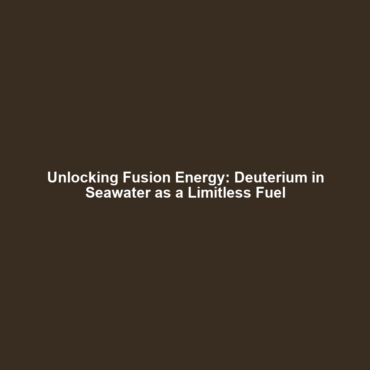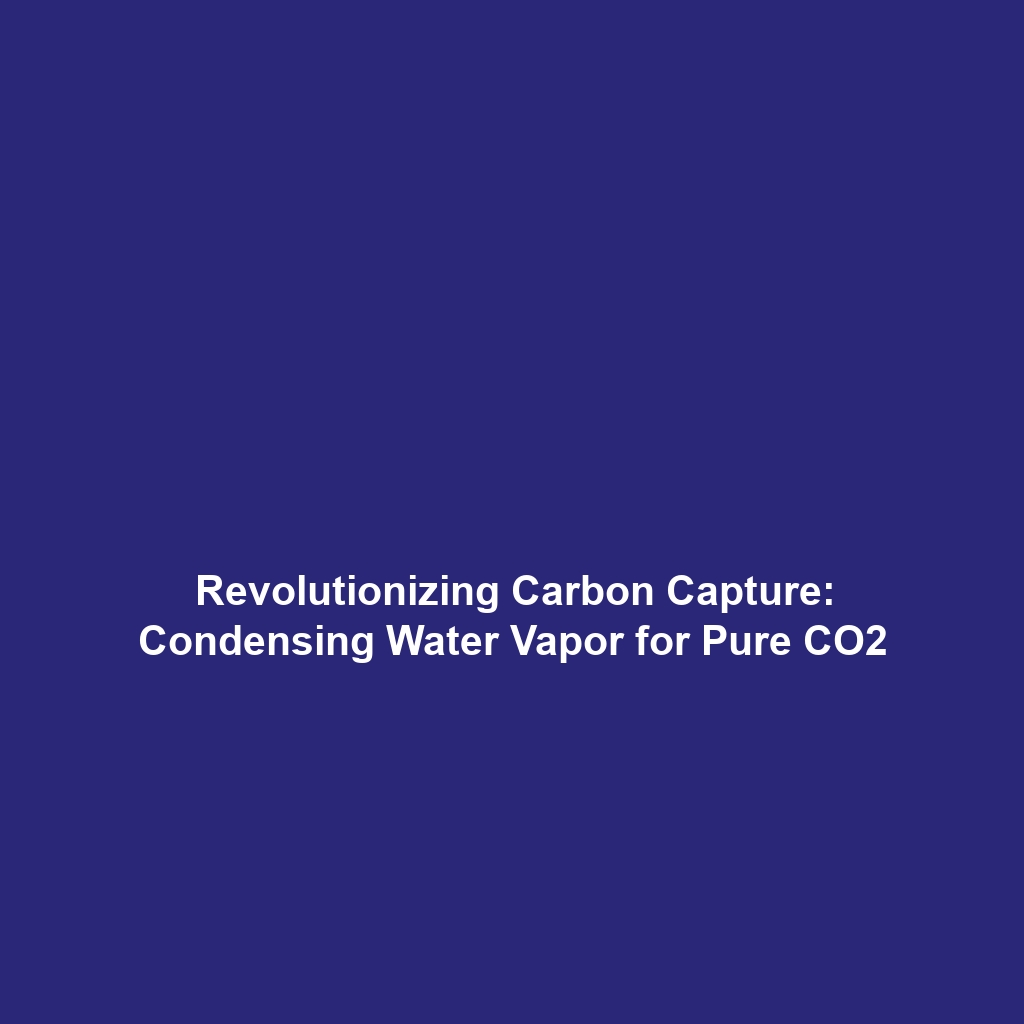Design of Donut-Shaped Magnetic Confinement Devices in Fusion Energy
In the quest for sustainable and virtually limitless energy, fusion energy has emerged as a promising solution, leveraging the same processes that power the sun. Central to successful fusion reactions is the confinement of hot plasma, which is crucial for enabling atomic nuclei to fuse. One innovative design in this field is the donut-shaped magnetic confinement device, known as a tokamak, which uses powerful magnetic fields to contain plasma for a sufficient duration to achieve fusion. This article explores its significance in the broader context of fusion energy, key concepts, real-world applications, challenges, and future prospects.
Key Concepts of Magnetic Confinement
The donut-shaped magnetic confinement device operates on several foundational principles:
- Magnetic Fields: These devices employ strong magnetics to create a field that keeps the high-temperature plasma stable and prevents it from contacting the walls of the reactor.
- Plasma Confinement: Hot plasma, consisting of free electrons and atomic nuclei, is contained within the device’s doughnut shape, allowing conditions favorable for fusion to develop.
- Fusion Reaction Conditions: The key components for fusion success include elevated temperatures (millions of degrees) and pressure that encourages nuclei to collide and fuse.
This design represents a substantial advancement in fusion energy technology, significantly increasing the feasibility of sustained thermonuclear reactions.
Applications and Real-World Uses
The applications of donut-shaped magnetic confinement devices extend beyond experimental research, paving the way for practical uses in the field of fusion energy:
- Energy Generation: Successful tokamak designs, such as ITER (International Thermonuclear Experimental Reactor), aim to produce fusion power for global energy needs.
- Scientific Research: These devices are utilized in laboratory settings to study plasma behavior and improve fusion technologies.
- Military Applications: Research insights from fusion energy are also applied in the development of advanced weaponry and propulsion systems.
Current Challenges in Magnetic Confinement
Despite their promise, several challenges hinder the practical application of magnetic confinement devices in fusion energy:
- Stability Issues: Maintaining plasma stability over extended periods is difficult and can lead to disruptions.
- Material Limitations: The extreme temperatures and neutron bombardment can degrade the materials used in reactor construction.
- Cost Factors: High initial investment for tokamak facilities leads to complications in funding and resource allocation.
- Energy Input vs. Output: Current technology often struggles to achieve a net positive energy output from fusion reactions.
Future Research and Innovations
The future of donut-shaped magnetic confinement devices in fusion energy looks promising, with ongoing research focusing on several key innovations:
- Advanced Materials: Development of radiation-resistant materials that can withstand extreme conditions is a priority.
- Increased Efficiency: New approaches for heating and compressing plasma could lead to higher reaction rates.
- Next-Gen Tokamaks: Initiatives to design smaller, more efficient tokamaks could significantly lower costs and barriers to entry into fusion energy generation.
Conclusion
In summary, the design of donut-shaped magnetic confinement devices plays a critical role in the advancement of fusion energy, offering a sustainable energy solution for the future. Although significant challenges remain, ongoing research and innovations are paving the way for breakthroughs in this field. With continued investment and support, the dream of harnessing fusion energy could soon become a reality. To learn more about the challenges and innovations in fusion energy, visit our articles on fusion energy challenges and new fusion technologies.









